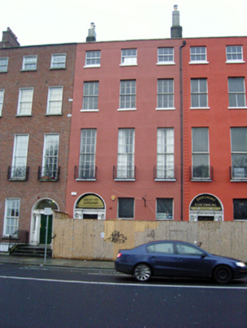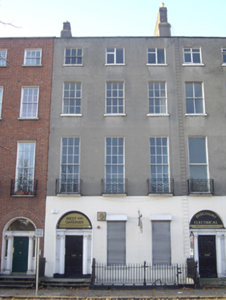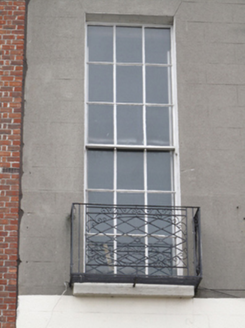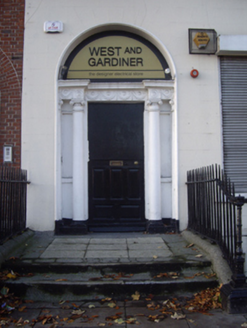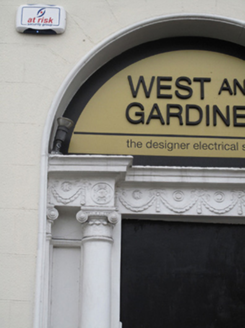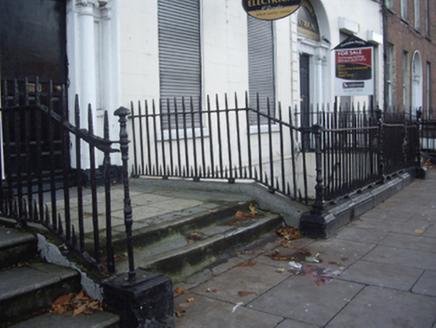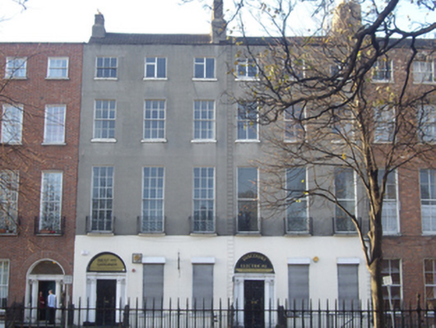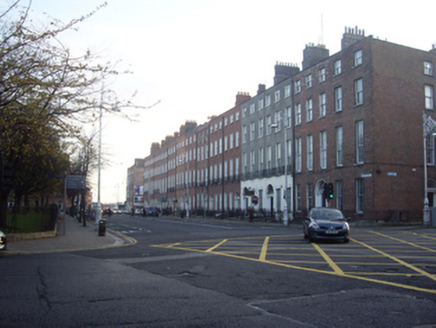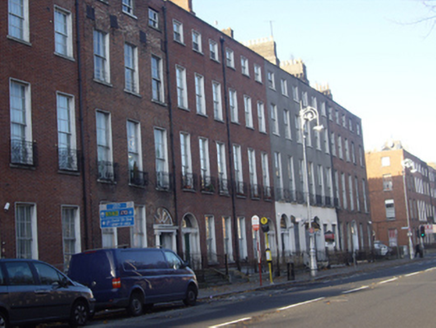Survey Data
Reg No
50010950
Rating
Regional
Categories of Special Interest
Architectural, Artistic
Original Use
House
Historical Use
Shop/retail outlet
Date
1795 - 1805
Coordinates
315970, 235406
Date Recorded
28/11/2011
Date Updated
--/--/--
Description
Terraced three-bay four-storey house over exposed basement, built c.1800, as one of pair. Interconnected with No. 66 and currently vacant. Double-pile concrete tiled roof with pair of hipped sections to rear set perpendicular to street. Stepped rendered brick chimneystacks with clay pots to both party walls. Roof hidden behind rendered parapet wall with bitumen covered coping. Cement rendered walls on moulded painted granite plinth course over rendered basement walls. Cement rendered walls to rear elevation. Square-headed window openings with painted granite sills and replacement timber sliding sash windows, nine-over-nine pane to first floor, six-over-six pane to second floor, replacement timber casement to top floor, and metal roller shutters to ground floor. Decorative wrought-iron balconettes to first floor and original wrought-iron grilles to blocked up basement windows. Round-headed door opening with moulded stucco surround and painted stone Ionic doorcase. Original timber door with eleven raised-and-fielded panels (partly covered) flanked by engaged Ionic columns on plinth blocks, blocked up sidelights and quarter engaged responding Ionic pilasters all supporting stepped lintel cornice with festoons and boarded up fanlight. Door opens onto terrazzo platform with and two terrazzo steps bridging basement. Platform and basement enclosed by original wrought-iron railings with cast-iron corner posts set on moulded granite plinth wall. Matching iron gate provides access to basement via concrete steps. Façade of original mews building remains to rear.
Appraisal
This building forms part of the most intact original terrace on Mountjoy Square. Its classical doorcase exhibits fine decorative detailing and original door, and the timber sash windows also contribute to its architectural character. A notable feature of the façade, which is shared with its pair to the south, is the extremely tall first floor window openings, which contribute to the elegance of the terrace. The retention of the stone steps and plinth, and ironmongery to the entrance and basement area all contributes to the relatively intact appearance of this house and its setting. The building is reputed to retain fine plasterwork to the interior, thus adding to the wealth of interest of the square as a whole. Mountjoy Square was built on lands formerly belonging to Saint Mary’s Abbey and laid out in 1790 by Luke Gardiner II and completed by 1818. Originally called Gardiner Square, the plan was to develop a strong vista from Custom House to Mountjoy Square then on to the intended Royal Circus. Although failing to achieve his original ambitious plan for a palace façade with flanking domed pavilions, Mountjoy Square is more carefully laid out than the city’s other Georgian squares. It is symmetrical and has a unified parapet height and the east-west approaches are offset to create a sense of enclosure. After falling into serious neglect and dereliction throughout the twentieth-century resulting in the loss of one third of its original buildings, the square has since been repaired. The south and west sides of the square were the worst affected and No. 65 is one of only six original buildings to have survived.
